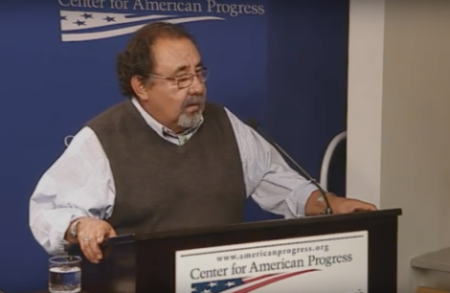 For gifted and talented students of color, access to accelerated learning programs is often strewn with one barrier after another. Instructor bias, inept teacher prep programs, a subjective screening system, and a lack of funding often conspire to keep young minority scholars out of the academic fast lane.
For gifted and talented students of color, access to accelerated learning programs is often strewn with one barrier after another. Instructor bias, inept teacher prep programs, a subjective screening system, and a lack of funding often conspire to keep young minority scholars out of the academic fast lane.
The result for many gifted Black, Latino, American Indian and other minority students is one of frustration over lost opportunities and unfulfilled potential.
“High-achieving students of color are an increasing share of the overall student population,” said Danyelle Solomon, moderator at a recent discussion at the Center for American Progress (CAP) in Washington, D.C. titled, “How Can Public Schools Better Support Talented Students of Color.”
“Despite their growing prominence in schools, research shows they have less access to rigorous programming,” said Solomon, director of CAP’s Progress 2050 program.
Panelist Lauren Mims, Assistant Director, White House Initiative on Educational Excellence for African Americans, said in the early days of these programs that women and minorities were often viewed as “inferior.”
“As a result, these students too frequently lacked access to postsecondary opportunities that would enable them to fulfill their potential,” Mims said. “This is a civil rights issue.”
A recent study by the U.S. Department of Education titled, “Civil Rights Data Collection: First Look,” finds that White students make up 49 percent of the school population and 57 percent of those enrolled in gifted and talented programs, while Black and Latino students comprise 42 percent of public school students but only 28 percent of participants in enrichment programs.
Citing the study, Mims said, “there are not disproportionate levels of Black kids who are less gifted, or Latino kids who are less gifted.”
 According to the Department of Education, Black and Latino students comprise 42 percent of public school students but only 28 percent of participants in enrichment programs.
According to the Department of Education, Black and Latino students comprise 42 percent of public school students but only 28 percent of participants in enrichment programs.
To support gifted students of color, Mims stressed the need to increase teacher cultural competency.
“We have (in our schools) issues of access and equity,” she said. “Children don’t come to school as blank slates.”
The Every Student Succeeds Act, passed by Congress in 2015 to replace No Child Left Behind, requires state accountability systems to include at least one “Opportunity Dashboard” indicator of school quality or student success, a provision which the National Education Association strongly advocated for during the legislative progress. Student access to advanced coursework is one of those key indicators.
In his keynote speech prior to the CAP discussion, U.S. Rep. Raúl Grijalva of Arizona said school districts must identify evidence-based practices that improve student achievement while developing a national network that shares best practices.
“Public schools have the greatest chance of ensuring that talented students of color are adequately served,” said Grijalva, a Democrat who serves on the House Committee on Education and the Workforce. “The public school system is probably the greatest integrative tool in our society. The resources needed in our schools should be a priority.”
Grijalva said equal access to enrichment programs is a goal that must include immigrant children, English language learners, and those from low-income families.
“How in the world are we going to talk about economic security if we’re not putting resources in schools and allowing the new faces of America to be fully educated,” he asked. “We need to (provide) the opportunities, rigorous academic challenges, and the process to help children blossom.”
The origins of programs for gifted and talented students can be traced to the early part of the 20th century, though they garnered more attention in the mid-1950s following the 1954 U.S. Supreme Court case Brown v. Board of Education of Topeka.
This landmark case declared state laws establishing separate public schools for Black and White students to be unconstitutional, an action which may have led to unexpected consequences for talented students of color.
 Rep. Raúl Grijalva discusses expanding academic opportunities for high-achieving students of color at the Center for American Progress.
Rep. Raúl Grijalva discusses expanding academic opportunities for high-achieving students of color at the Center for American Progress.
“There were places where White parents would sort of wall off opportunities for their own kids as a way to push back the integration of schools,” said Michael Petrilli, president of the Thomas B. Fordham Institute. “(Later), there were some places that started getting rid of those programs but they didn’t get rid of them everywhere. They tended to be in high poverty areas, places serving children of color.”
To improve access to selective programs for students of color, panelists stressed the need for universal screening as well as increasing the number of public school minority teachers and administrators, specifically African American and Latino males. Also, investing in high quality early care and education programs while increasing the number of minority children enrolled in preschool programs.
“There are a lot of high poverty schools out there that don’t offer these programs,” said Hannah Doruelo, Posse scholar and Institute for Recruitment of Teachers Fellow. “We have to think how we are critically assessing their talents.”
The panelists said that strengthening relationships between schools and communities and local businesses, social service agencies, health care providers, and parent and volunteer organizations would also help to improve program access for talented students of color.


